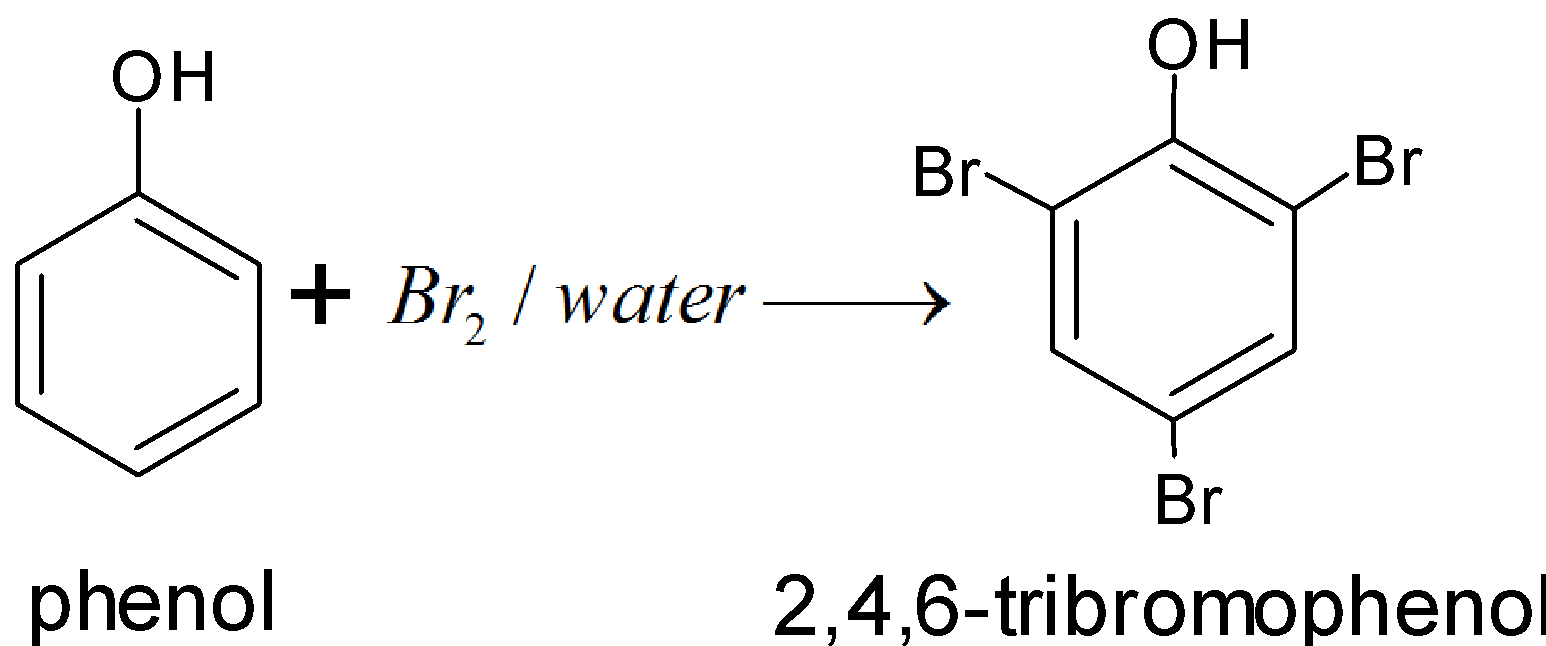
Reaction of bromine water phenol gives white ppt of:
A. o – bromophenol
B. p – bromophenol
C. 2,4,6 – tribromophenol
D. m – bromophenol
Answer
520.2k+ views
Hint: When bromine water is added to a solution of phenol in water, the bromine water is decolourised and a white precipitate is formed which smells of antiseptic.
Complete step-by-step answer:
We know that the reaction of phenol and water with bromine is known as bromination of phenol. Solvent has a great influence on the reaction. In different solvents, different products are obtained.
Bromination of phenol is a substitution reaction. Where the bromine replaces hydrogen present in the benzene ring of phenol. In the water solvent when phenol treated with

So, the correct answer is “D”.
A, B, C are incorrect because these product formation takes place in non-polar solvents.
Note: In non-polar solvents the ionization of phenol is greatly suppressed. As a result,
Complete step-by-step answer:
We know that the reaction of phenol and water with bromine is known as bromination of phenol. Solvent has a great influence on the reaction. In different solvents, different products are obtained.
Bromination of phenol is a substitution reaction. Where the bromine replaces hydrogen present in the benzene ring of phenol. In the water solvent when phenol treated with

So, the correct answer is “D”.
A, B, C are incorrect because these product formation takes place in non-polar solvents.
Note: In non-polar solvents the ionization of phenol is greatly suppressed. As a result,
Recently Updated Pages
Master Class 12 Business Studies: Engaging Questions & Answers for Success

Master Class 12 English: Engaging Questions & Answers for Success

Master Class 12 Social Science: Engaging Questions & Answers for Success

Master Class 12 Chemistry: Engaging Questions & Answers for Success

Class 12 Question and Answer - Your Ultimate Solutions Guide

Master Class 11 Business Studies: Engaging Questions & Answers for Success

Trending doubts
Draw a labelled sketch of the human eye class 12 physics CBSE

a Tabulate the differences in the characteristics of class 12 chemistry CBSE

Which one of the following is a true fish A Jellyfish class 12 biology CBSE

Why is the cell called the structural and functional class 12 biology CBSE

Differentiate between homogeneous and heterogeneous class 12 chemistry CBSE

Write the difference between solid liquid and gas class 12 chemistry CBSE




